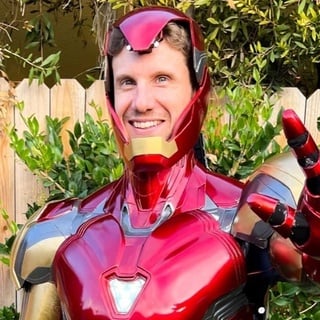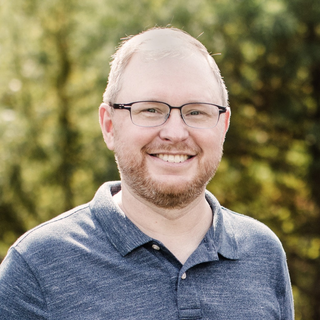3D Animator Interview Questions
3D Animators breathe life into digital worlds, making imagination tangible. This guide is your key to hiring the perfect 3D Animator. Within, you'll uncover 25 interview questions crafted to assess a candidate's creative flair, technical skills in animation software, and their approach to storytelling through motion. Discover the 3D Animator who will bring your visions to life.
Can you explain the difference between 2D and 3D animation? Answer: 2D animation involves creating two-dimensional images in a sequence, while 3D animation adds depth and realism by working in three dimensions. 3D animation often involves modeling, rigging, and rendering.
What software and tools are you proficient in for 3D animation? Answer: I'm proficient in industry-standard software like Autodesk Maya, Blender, and Cinema 4D. I also have experience with various plugins and add-ons.
Walk us through your animation workflow from concept to final render. Answer: My workflow starts with concept development and storyboarding, followed by 3D modeling, rigging, animation, texturing, lighting, and rendering. I pay close attention to detail at each stage to ensure a polished final product.
How do you approach character animation, and what techniques do you use to make movements appear natural? Answer: Character animation involves observing real-life movements and applying principles like squash and stretch, anticipation, and follow-through. I also use reference videos and conduct thorough research to capture natural motions.
Can you explain the concept of keyframes in animation? Answer: Keyframes are specific frames in an animation sequence where significant changes occur. Animators set keyframes to define the start and end points of movements or actions, and the software interpolates the frames in between.
What are the principles of animation, and how do they influence your work? Answer: The principles of animation include timing, spacing, exaggeration, and anticipation, among others. These principles guide me in creating animations that feel lifelike and engaging.
Have you worked on collaborative animation projects? How do you ensure consistency and cohesion in team projects? Answer: Yes, collaboration is common in animation. Clear communication, regular feedback, and adherence to style guides help maintain consistency and cohesion in team projects.
Tell us about a challenging animation project you've worked on and how you overcame obstacles. Answer: In a project involving complex character interactions, I faced technical challenges with rigging and collision detection. I collaborated with the technical team to find solutions and met project deadlines.
What role does storytelling play in animation, and how do you incorporate it into your work? Answer: Storytelling is fundamental in animation. It drives character development and emotional engagement. I pay close attention to character expressions, body language, and scene composition to convey the narrative effectively.
How do you stay updated with the latest trends and techniques in 3D animation? Answer: I regularly follow industry blogs, attend animation conferences, and participate in online communities to stay informed about the latest trends, tools, and techniques.
Can you discuss your experience with 3D modeling and texturing for animation? Answer: 3D modeling involves creating the physical appearance of objects or characters, while texturing adds surface detail. I have experience in both areas, ensuring that models look realistic and visually appealing.
What is rigging in 3D animation, and why is it important? Answer: Rigging is the process of creating a skeleton and controls for a 3D model to enable movement. It's crucial for animators to bring characters to life by posing and animating them.
How do you handle tight project deadlines in animation, and what strategies do you employ to manage time effectively? Answer: I prioritize tasks, break down projects into manageable stages, and set milestones. Effective time management and a well-organized workflow help me meet tight deadlines.
Can you explain the concept of motion capture in animation? Answer: Motion capture involves recording the movements of real actors or objects and applying them to 3D characters or models. It enhances realism and saves time in animation.
What types of animation projects do you enjoy working on the most, and why? Answer: I enjoy character animation and storytelling projects the most because they allow me to connect with audiences on an emotional level and bring unique personalities to life.
How do you handle feedback and critique of your animation work? Answer: I welcome feedback as an opportunity for growth. I take constructive criticism positively and use it to refine my animations and enhance my skills.
Can you discuss your experience with creating animations for different platforms, such as games, films, or advertisements? Answer: I have experience creating animations for various platforms, adapting my style and techniques to meet the specific requirements of each medium.
What is the role of sound in animation, and how do you collaborate with sound designers? Answer: Sound enhances the overall impact of animation. I collaborate closely with sound designers to synchronize animations with sound effects and music for a cohesive viewer experience.
Can you share an example of a project where you had to balance creativity with technical constraints? Answer: In a mobile game project, I had to create visually stunning animations while optimizing them for performance on lower-end devices. It required finding creative solutions within technical limitations.
Describe your experience with 3D rendering and the software tools you use for rendering. Answer: I have experience with 3D rendering using software like Arnold, V-Ray, and RenderMan. Rendering is the final step in creating realistic visuals in animation.
What animation projects are you most proud of in your career, and why? Answer: I'm proud of a short film project where I was responsible for character animation. It received recognition at a film festival and showcased my ability to convey emotions through animation.
How do you handle repetitive or tedious animation tasks, and do you have any shortcuts or automation techniques? Answer: I streamline repetitive tasks using automation scripts and keyboard shortcuts, which helps maintain efficiency and reduces the risk of errors.
Can you explain the importance of character design in 3D animation, and how does it influence your work? Answer: Character design sets the foundation for a character's personality and appearance. It guides my animation choices, ensuring that movements align with the character's design and story.
What excites you the most about the future of 3D animation, and what role do you see yourself playing in it? Answer: I'm excited about the increasing integration of 3D animation in various industries, from entertainment to education. I see myself pushing the boundaries of storytelling and visual effects in future projects.
Hiring an 3D Animators With Braintrust
In your pursuit of 3D Animators, we stand ready to assist in finding top talent swiftly. With our services, you can expect to be matched with five highly-qualified 3D Animators within just minutes. Let us streamline your recruitment process and connect you with the skilled professionals you seek to meet your needs effectively.
Looking for Work

JJ Chalupnik Chalupnik
Atlanta, GA, USA
- 3D Modeling
- Video Editing
Looking for Work

Michael Morris Morris
Whittier, CA, USA
- 3-D Animation
- 3D Modeling
Looking for Work

Shaun Hamm
Columbus, OH, USA
- 3D Modeling
- Photoshop
Get matched with Top 3D Animators in minutes 🥳
Hire Top 3D Animators


